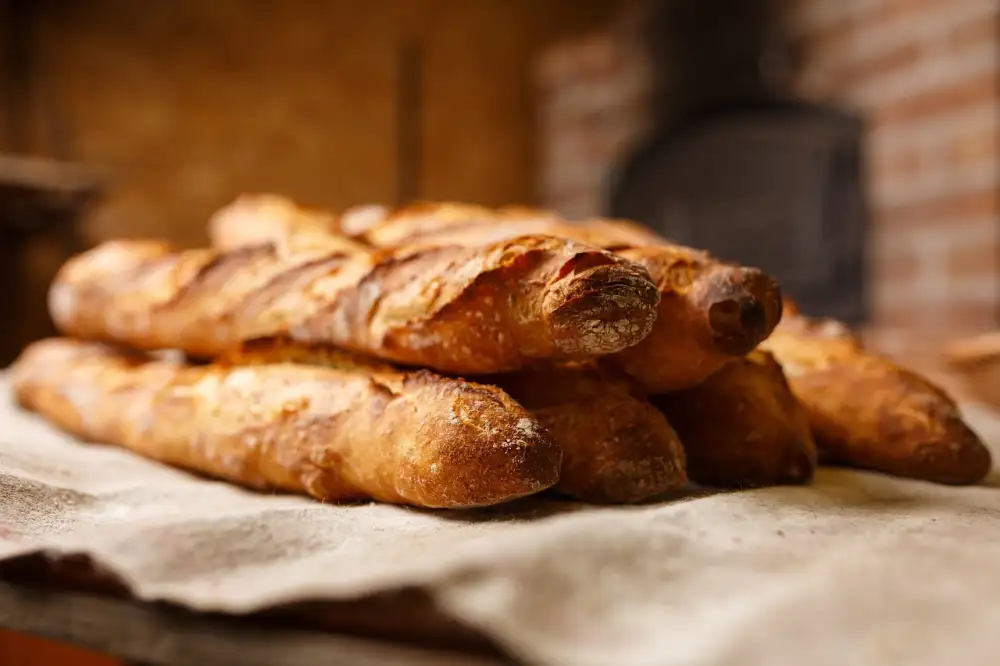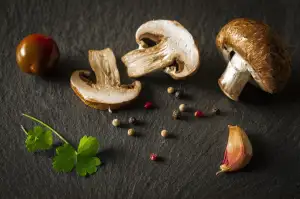Deliciously Nutty: Unleash the Flavor of Rye Bread with Our Irresistible Recipes

Rye bread, with its rich and distinct flavor, has been a staple in many cultures for centuries. Made from rye flour, this bread offers a unique taste and texture that sets it apart from other types of bread. Whether you prefer a hearty slice for breakfast or as the foundation for a delicious sandwich, rye bread is sure to satisfy your cravings. In this article, we will explore the history, health benefits, recipes, variations, and tips for baking perfect rye bread. Get ready to unleash the irresistible flavors of rye bread and elevate your culinary experience.
History and Origins of Rye Bread
Rye bread has a rich history that dates back centuries. Its origins can be traced to Northern and Eastern Europe, where rye was one of the few grains that could thrive in the harsh climates. The first recorded mention of rye bread dates back to the Middle Ages, when it was a staple food for peasants.
During this time, wheat was considered a luxury and was mainly consumed by the upper classes. Rye bread became the commoners' bread, providing them with sustenance and nourishment. Its affordability and availability made it a popular choice among the working class.
As time went on, rye bread evolved and became an integral part of various cultures' culinary traditions. Each region developed its own unique recipe, incorporating local ingredients and techniques. In Scandinavia, for example, they introduced sourdough fermentation to enhance the flavor and improve shelf life.
In Eastern Europe, particularly in countries like Poland and Russia, rye bread became deeply ingrained in their cultural identity. It was often served during special occasions such as weddings or religious holidays.
Today, rye bread continues to be enjoyed worldwide for its distinct flavor and nutritional benefits. Its history is a testament to its resilience and versatility as a staple food throughout the ages.
Health Benefits of Rye Bread
Rye bread not only tantalizes our taste buds but also offers numerous health benefits. Packed with fiber, it aids digestion and promotes a feeling of fullness, making it an excellent choice for weight management. Rye bread is also rich in vitamins and minerals such as iron, magnesium, and B vitamins, which are essential for energy production and overall well-being. Additionally, rye bread has a lower glycemic index compared to wheat bread, meaning it causes a slower rise in blood sugar levels. This makes it an ideal option for individuals with diabetes or those looking to maintain stable blood sugar levels. Incorporating rye bread into your diet can contribute to a healthier lifestyle while savoring its delicious flavors.
Traditional Rye Bread Recipe
Ingredients:
- 2 cups rye flour
- 1 cup bread flour
- 2 teaspoons active dry yeast
- 1 teaspoon salt
- 1 tablespoon caraway seeds (optional)
- 1 tablespoon molasses or honey
- 1 cup warm water
Instructions:
1. In a large mixing bowl, combine the rye flour, bread flour, yeast, salt, and caraway seeds (if using).
2. In a separate bowl, mix the molasses or honey with warm water until dissolved.
3. Pour the liquid mixture into the dry ingredients and stir well to form a sticky dough.
4. Knead the dough on a floured surface for about 10 minutes until it becomes smooth and elastic.
5. Place the dough in a greased bowl, cover with a clean kitchen towel, and let it rise in a warm place for about 1 hour or until doubled in size.
6. Preheat your oven to 425°F (220°C) and place an empty baking dish on the bottom rack.
7. Punch down the risen dough to release any air bubbles and shape it into a loaf.
8. Transfer the loaf onto a greased baking sheet or into a greased loaf pan.
9. Cover again with the kitchen towel and let it rise for another 30 minutes.
10. Fill the empty baking dish with boiling water to create steam in the oven while baking.
11. Bake the rye bread for about 30-35 minutes or until golden brown and sounds hollow when tapped on the bottom.
12. Remove from oven and let cool completely before slicing.
Enjoy your homemade traditional rye bread!
Variations of Rye Bread
Rye bread is incredibly versatile, allowing for a wide range of delicious variations. Here are a few popular ones to try:
- Caraway Rye: Add caraway seeds to the dough for a classic flavor combination that pairs perfectly with deli meats and pickles.
- Onion Rye: Sautéed onions mixed into the dough create a savory and aromatic bread that is ideal for sandwiches or toast.
- Pumpernickel: This dark, dense bread is made from coarsely ground rye flour and often includes molasses or cocoa powder for added richness.
- Sunflower Seed Rye: Incorporate toasted sunflower seeds into the dough for a nutty crunch that complements the earthy flavor of rye.
- Dill Rye: Infuse the dough with fresh dill to create a fragrant and flavorful bread that is perfect for serving alongside soups or salads.
These variations allow you to experiment with different flavors and textures while still enjoying the distinct taste of rye bread. Get creative in your kitchen and discover your own unique twist on this beloved classic!
Tips for Baking Perfect Rye Bread
1. Use a combination of rye and bread flour: Rye flour has less gluten than wheat flour, so using a mix of rye and bread flour will help achieve a lighter texture.
2. Add vital wheat gluten: To improve the rise and structure of your rye bread, add vital wheat gluten to the dough. This will help compensate for the lower gluten content in rye flour.
3. Let the dough rest: After mixing the ingredients, let the dough rest for about 20 minutes before kneading. This allows the flour to fully hydrate and makes it easier to work with.
4. Knead gently: Rye dough is more delicate than wheat dough, so avoid over-kneading. Gently fold and stretch the dough until it becomes smooth and elastic.
5. Use a warm environment for proofing: Rye bread benefits from a slightly warmer environment during proofing. Place the dough in a warm spot or use a proofing box to help it rise properly.
6. Add steam during baking: To achieve that classic crusty exterior, create steam in your oven by placing a pan of water on the bottom rack or spraying water into the oven at regular intervals during baking.
7. Cool completely before slicing: Rye bread needs time to cool and set after baking. Resist the temptation to slice into it right away as this can cause it to become gummy.
With these tips in mind, you'll be well on your way to baking perfect rye bread every time!
Serving and Pairing Suggestions for Rye Bread
Rye bread is incredibly versatile and can be enjoyed in a variety of ways. Here are some serving and pairing suggestions to enhance your rye bread experience.
1. Classic Sandwiches: Rye bread is perfect for making classic sandwiches like pastrami, corned beef, or turkey. Its hearty texture and nutty flavor complement the fillings beautifully.
2. Open-faced Smørrebrød: Embrace the Scandinavian tradition of smørrebrød by topping slices of rye bread with smoked salmon, pickled herring, or creamy cheeses. Add a dollop of horseradish sauce or dill for an extra kick.
3. Toasted with Butter: Sometimes simplicity is best. Toast a slice of rye bread until golden brown and spread it with butter for a deliciously comforting snack or breakfast option.
4. Cheese Platters: Serve slices of rye bread alongside a selection of cheeses such as Gouda, Camembert, or aged cheddar. The earthy flavors of rye complement the richness of cheese perfectly.
5. Soup Dippers: Rye bread makes an excellent companion to soups and stews. Cut into cubes or strips, toast them lightly, and use them as dippers for hearty vegetable soups or creamy chowders.
6. Bruschetta Bases: Instead of using traditional baguette slices, try using toasted rounds of rye bread as a base for bruschetta toppings like tomatoes, basil, and mozzarella.
7. Breakfast Delights: Top toasted rye bread with avocado slices, poached eggs, and a sprinkle of sea salt for a nutritious and satisfying breakfast option.
Remember to experiment with different flavors and ingredients to find your favorite combinations. Whether you're enjoying it on its own or using it as a base for creative dishes, rye bread adds depth and character to any meal.
In conclusion, rye bread is a versatile and delicious option that should not be overlooked. Its rich, nutty flavor adds depth to any meal and its numerous health benefits make it a smart choice for those looking to improve their overall well-being. Whether you prefer a traditional recipe or want to experiment with different variations, baking rye bread at home is a rewarding experience that will fill your kitchen with enticing aromas. So go ahead, unleash the flavor of rye bread and indulge in its delightful taste. Your taste buds will thank you!
Published: 22. 12. 2023
Category: Recipes



